Biodynamic farming: Animals live freely on our farm
Animals are an important part of any Biodynamic farm, including ours. Biodynamic farming is a unified process, where many interdependent elements work together to create one, harmonious living organism. Plants, animals, people, soil, environment—we all work together with a shared goal of symbiotic health thriving all around us and between us.
At Eco Terreno, our animal partners are integral to the health of our vineyards and garden produce, our rich soils and compost, our Russian River surroundings, and our own livelihood. They’re also a joy to be around.
The animals of the Eco Terreno wine farm
As with all other elements of Biodynamic farming, diverse animal husbandry (i.e. breeding or caring for animals) helps keep nature in balance. This is why we keep chickens, running ducks and geese among the vines and gardens all year long and during the winter months invite sheep to visit our vineyard.
Each animal plays its part, giving and taking for the betterment of our idyllic natural ecosystem.
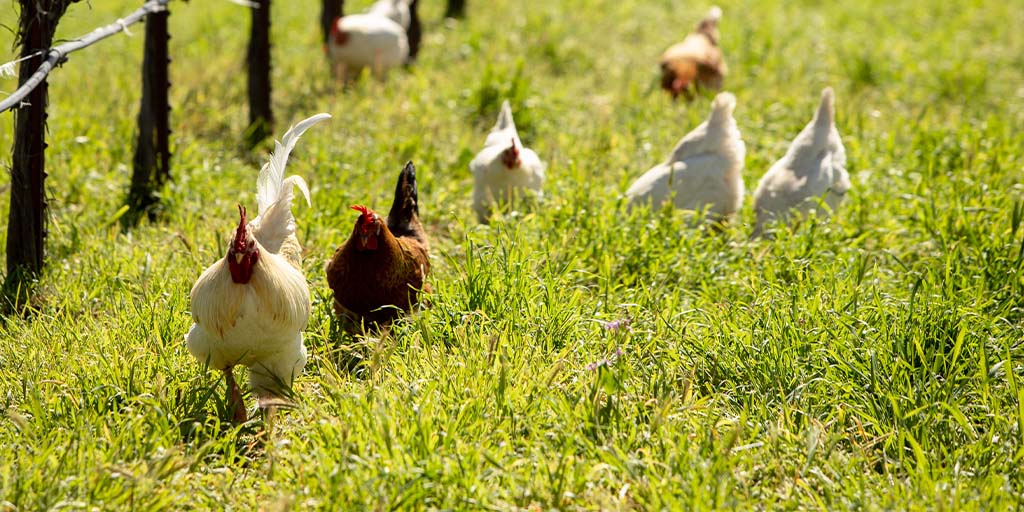
How chickens on a vineyard contribute to Biodynamic farming
Chickens on a vineyard are a good idea for three reasons: They provide manure that helps keep the soil healthy. They are natural pest controllers. And they lay delicious pasture-raised eggs with vibrant golden yolks; these are a delight to our team members and to shoppers at our local grocery store, Dahlia & Sage.
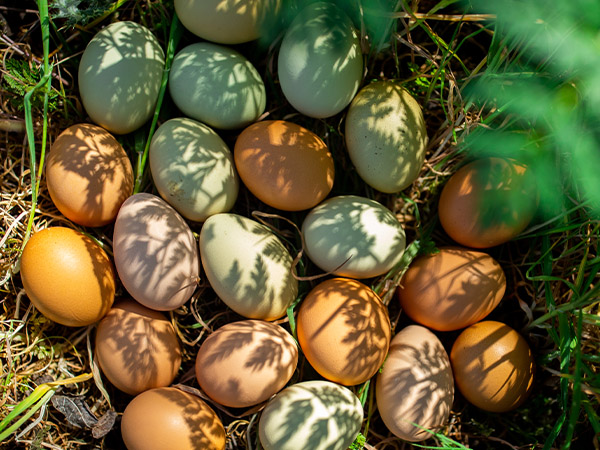
What our ducks do in our vineyards
The breed of ducks at Eco Terreno are Running Ducks. Raised from ducklings, we’re very attached to them. Ducks have been a great addition to our vineyard, providing all the same benefits as chickens; manure depositors, egg producers, and natural pest controllers. We also allow them to forage freely in our bee garden, eating pests such as slugs, snails, damaging beetles, and grasshoppers.
The role geese play in improving our Biodynamic farm
Geese are effective natural pest controllers and soil fertilizers. And they are great watchdogs … or shall we say watch birds; they let it be known when visitors arrive at the vineyards.

Why sheep on a vineyard makes sense during winter
Sheep are welcome on our vineyards only when the vines are dormant for good reason: they have great taste and would gobble up our vines if they could. But during the winter months, when we sow grasses as vineyard cover crops, the sheep act as live mowers; they trim back our cover crops, enriching the soil with their nutrient-rich manure. As they graze their hooves gently massage and work these nutrients into the soil deeper. These acts are mutually beneficial but we feel we get the best deal; they feed on tasty grass, we reduce our fossil fuel usage by not mowing with gas-guzzling tractors and truck in less manure.
With the right animals in a vineyard, we see all the benefits of Biodynamic farming, including exceptional wines that showcase a true sense of place and winemaking that gives back more than it takes from our beloved Earth.
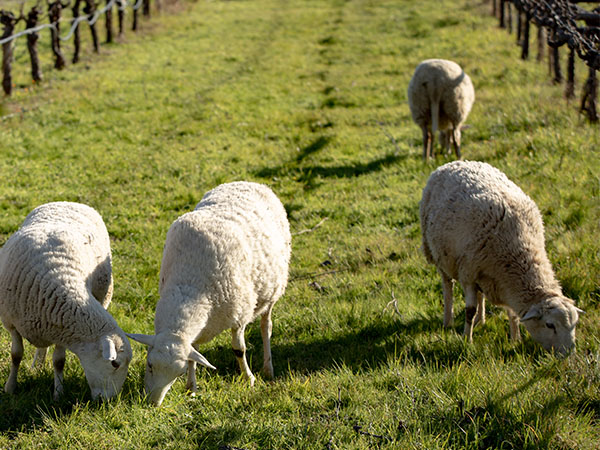
How to keep chickens in your own backyard
How many chickens should I keep in my backyard?
We all can’t keep a cow or sheep in our backyard, but chickens are possible. And they do much more than just provide you with rich, golden eggs to eat. They eat unwanted insects and leave you gifts of nutrient rich droppings that improve the health of your soil.
How many chickens should I keep in my flock?
Chickens are sociable creatures, so plan on at least three chickens. If you can stretch it to more, six birds is the ideal number. And with more chickens comes more eggs for you to eat. Yum. As a guide, an adult hen lays about two eggs every three days. So with six birds, you’ll have enough for you, the family, and maybe your next door neighbors too.
How much yard space do I need for my chickens?
This is one of the first questions you need to ask yourself. Do you have enough space for your flock of chickens to roam? A good rule of thumb is ten square feet per chicken. That makes the calculation relatively easy.
- Three birds need 30 square feet of backyard space
- Six birds need 60 square feet of backyard space
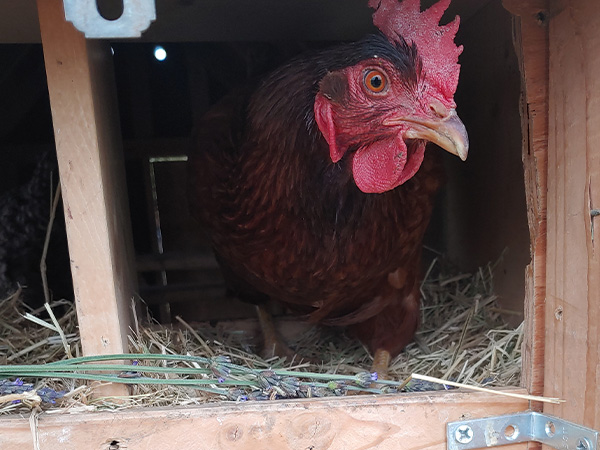
How big does the coop need to be for my backyard chickens?
Four square feet per bird is the recommendation.
Based on this:
- three birds need a 12 foot square coop
- six birds need a 24 foot square coop
- ten birds need a 40 foot square coop
Use these numbers as a guide when purchasing or building your coop. The shape too is a consideration. Rectangle or square, depending on the layout of your backyard.
What should I feed my backyard chickens?
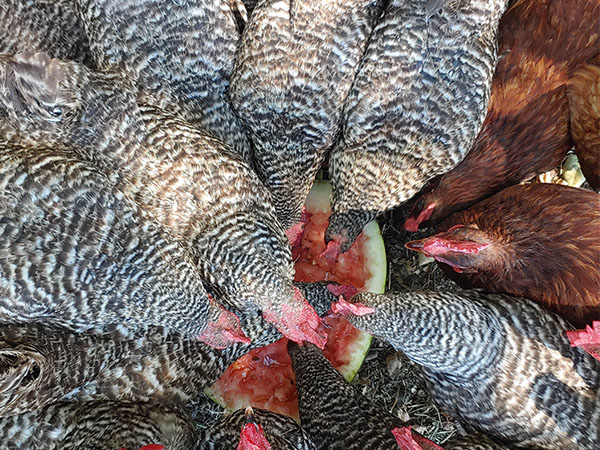
Your vegetable scraps is the easy answer. Green leafy vegetables are a particular favorite. And watermelons are a special treat.
But there are some things you should avoid giving them. General rule is not to feed foods high in fat and salt. And there are some specific foods not to feed them, particularly:
- raw potato,
- avocado,
- chocolate,
- onion,
- garlic,
- citrus fruits,
- uncooked rice,
- uncooked beans
Join The Buzz – our mailing list with seasonal news from the vineyard and tips from our experts on living a more eco-friendly life.
